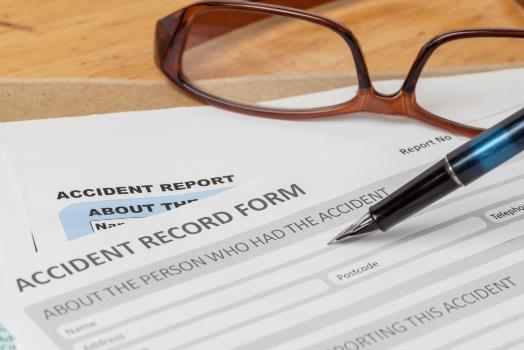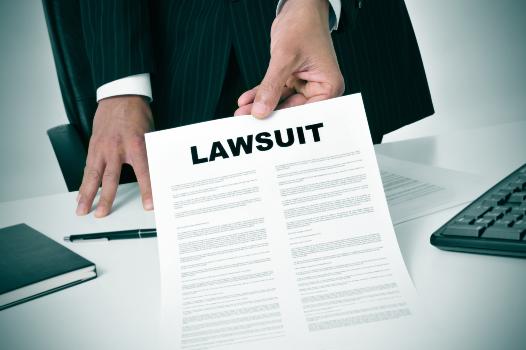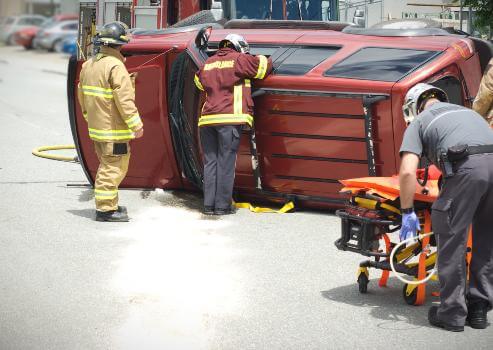Seat Belt Injuries to Chest Muscles in Ontario, Canada
Seat Belt Injuries to The Chest Muscles After a Car Accident in Ontario, Canada
Chest Injuries seat belt regulations in Ontario are designed to protect all road users from harm. According to the Highway Traffic Act, drivers and passengers must wear a seatbelt at all times while travelling on any public roadway in the province. Failure to do so may result in fines and other penalties that could have severe consequences down the line.
There are various types of chest injuries associated with failing to wear a seat belt properly while driving or riding as a passenger in Ontario. Common examples include fractured ribs, sternum damage, internal organ damage due to excessive pressure against the chest cavity wall, heart trauma and even internal bleeding leading to death in severe cases.
It is important for both drivers and passengers alike to understand these risks and take appropriate measures to protect themselves. All passengers should be seated with the seat belt properly adjusted and fastened around the chest, abdomen and hips. The shoulder strap should be positioned across the collarbone and tightened firmly against the body.
A lawyer will be able to provide advice about how best to proceed with such matters, including filing a personal injury claim or taking other legal action, where applicable. Taking prompt action can help to ensure that those responsible are held accountable and that any damages incurred by the injured party will be fully recovered.
It is essential for all road users in Ontario to remember to always wear a seatbelt when travelling on public roads – not only for the safety of the occupants but also to protect against potential chest injuries. In cases where negligence may have been involved, it is important to contact an experienced lawyer for more information about your rights and options.
- Considerations When It Comes to Seat Belt Injuries to Chest Muscles in Ontario?
- The Dangers of a Seat Belt Injury to the Chest in Ontario?
- Minimizing Risk: Understanding the Law Behind Seat Belt Injury Chest Pain in Ontario?
- Essential Information about Chest Pain After a Car Accident Seat Belt Injury in Ontario?
- Compensation for Chest Injuries: Car Accident Seat Belt Chest Injury Lawsuit in Ontario?



Seat Belt Injuries to Chest Muscles in Ontario, Canada
Considerations When It Comes to Seat Belt Injuries to Chest Muscles in Ontario, Canada
When driving or riding in a car, it is essential to take all steps necessary to ensure your safety. One of the most important steps is wearing a seat belt properly at all times. While many people are aware of the importance of using seat belts while in motion, they may not be as aware that improper use can lead to chest injuries. In Ontario, it is essential for drivers and passengers alike to be knowledgeable about the implications seat belt injury has on chest muscles and pain and what risks are associated with it.
Seat belts provide an incredible amount of protection when someone gets into an accident. However, improper use can lead to extremely serious issues. The force exerted by a seatbelt during an accident can cause various types of chest injuries, including contusions (bruises), pneumothorax (collapsed lungs) and rib fractures. Even when a person is wearing the seatbelt correctly, chest injuries can still occur due to the high forces involved in a crash.
It is important to understand that any kind of pain or discomfort experienced after an accident should be taken very seriously, especially if it’s located around the chest area. If you have been in an accident and are feeling pain in your chest or abdomen, seek medical attention immediately, as this may signify a more serious injury. It could also be beneficial to reach out to a lawyer for advice on how to protect yourself legally and financially.
Laws surrounding seat belt safety vary from province to province, so it is important to be aware of the laws in your specific province. In Ontario, there are various rules and regulations that must be followed regarding seat belt safety. All drivers and passengers in a car must wear seat belts at all times while the vehicle is in motion. Drivers can also face a penalty if they fail to ensure their passengers under the age of 16 are wearing a seatbelt properly at all times. Further, failure to comply with these laws could lead to serious legal repercussions, such as heavy fines or license suspensions.
Everyone has an obligation to protect themselves and those around them when in a moving vehicle, including understanding how proper use of seat belts can help prevent chest injuries or pain. It is essential for both drivers and passengers alike to take the necessary steps to ensure they are properly wearing their seat belts at all times and understand the risks associated with improper use. For more information on this topic, contact a lawyer for advice and guidance.



Seat Belt Injury to Chest in Ontario, Canada
The Dangers of a Seat Belt Injury to the Chest in Ontario, Canada
In Ontario, seat belt injuries to the chest are an unfortunate reality. The chest and abdomen areas of the body are vulnerable to injury while in a car crash due to the tightness of the seat belt straps. When passengers or drivers are not properly restrained, their bodies can be thrown forward with great force upon impact, leading to muscle strains and trauma-related injuries such as contusions, fractures and broken ribs. Chest pain after a car accident is often caused by this type of injury.
Drivers and passengers must follow the law and wear seatbelts. It is essential to protect against serious injury in the event of a crash. Unfortunately, even when wearing a seatbelt, you may experience chest injuries due to the force of impact or from being restrained by the restraint system itself. Chest injuries can include bruising, broken ribs, contusions, collapsed lungs or other more serious issues that can cause pain and affect your daily activities.
When driving or riding in a car, it is essential to wear your seat belt for safety. However, research has demonstrated that wearing a seat belt can occasionally cause damage to the chest muscles and other soft tissue if worn incorrectly or involved in an accident. Injuries to the chest from a seatbelt can include bruising, sprains, muscle strain, and even cracked ribs or internal bleeding of the organs.
Chest injuries from car accidents due to improperly worn seatbelts are surprisingly common; according to statistics from the Ontario Ministry of Transportation, around 50% of all auto accident fatalities could have been prevented by simply wearing a properly fitted seatbelt. A correctly worn shoulder strap should be positioned diagonally across your body between your shoulder and hip, while the lap portion should be snug against your pelvis and thighs.



Seat Belt Injury Chest Pain in Ontario, Canada
Minimizing Risk: Understanding the Law Behind Seat Belt Injury Chest Pain in Ontario, Canada
When it comes to seat belts, Ontario law requires all drivers and passengers over the age of 16 to buckle up. In addition, there are laws that regulate how tight the straps must be for them to properly protect you in a car accident. However, improper use or wearing of seatbelts can lead to serious chest injuries, even when the crash is minor.
Chest injuries related to seat belt use can range from bruising and muscle pain due to direct contact with the belt or its tensioners on impact, as well as more severe traumas caused by rapid deceleration such as rib fractures, broken clavicle bones and/or internal organ damage. It is also possible for these types of injuries to occur without an obvious visible sign.
It is important to remember that wearing a seatbelt will not always protect you from chest injuries, meaning it is essential to take careful consideration when it comes to how you should use and regulate your seatbelt in order to minimize the risk of such injury.



Chest Pain After a Car Accident Seat Belt in Ontario, Canada
Essential Information about Chest Pain After a Car Accident Seat Belt Injury in Ontario, Canada
In Ontario, it is illegal for drivers and passengers to not wear a seat belt while in the car. This law serves as an important safety measure to ensure that those travelling in cars are protected from serious injuries during accidents. Unfortunately, even with the use of a seat belt, some individuals may still experience chest pain after getting into a car accident in Ontario.
As such, it’s essential for everyone travelling in vehicles in Ontario to understand their rights when it comes to chest injuries caused by improper seat belt use. When one experiences chest pain from a car accident-related injury due to their vehicle’s improper use of a safety belt, they should get medical attention immediately and talk to a lawyer about filing for compensation for their injuries.
In Ontario, it is mandatory for all drivers and passengers to wear a safety belt in vehicles. While seatbelts can save your life in certain situations, they may also cause injuries when used improperly or incorrectly installed. Unfortunately, chest injury due to seat belt use is one of the most common types of injuries sustained in motor vehicle accidents.
It is important for both drivers and passengers to understand the risks associated with seat belt usage and take appropriate measures to protect themselves from these types of injuries. Commonly, chest pain resulting from a car accident involves an injury to the sternum–the bone that connects ribs on each side–and/or the surrounding muscles and soft tissue.
The most effective way to reduce the risk of chest injury is to ensure that the seat belt is properly adjusted for each individual occupant and worn correctly. For example, the shoulder strap should not cross underneath the arm or rest on top of it – a comfortable fit should be achieved when crossing over your mid-clavicle, resting across your collarbone but not too tight.
Furthermore, drivers must always remember to practice defensive driving techniques, as accidents are often unavoidable even with the safest of practices. In addition, all passengers should ensure their seatbelts are buckled securely before departure, and all occupants should remain in the car until help arrives if a collision occurs.



Car Accident Seat Belt Chest Injury in Ontario, Canada
Compensation for Chest Injuries: Car Accident Seat Belt Chest Injury Lawsuit in Ontario, Canada
Understanding the following laws related to seat belt chest injury in Ontario can help ensure that individuals are aware of their rights and responsibilities when it comes to protecting themselves from such an incident:
-It is a criminal offence in Ontario for drivers or passengers not to wear a seat belt while travelling in a vehicle.
-If someone experiences chest pain due to the misuse of a safety belt, they may be eligible for compensation through legal action.
-Injury claims arising out of automobile accidents involving improper use of seat belts must be filed within two years of the incident.
-Passengers and drivers may be able to receive compensation for pain and suffering, as well as medical expenses related to injury from a seatbelt-related chest injury.
-In cases where someone is found guilty of causing an accident due to not wearing a seat belt, they may face penalties such as fines or even jail time.
It is important for individuals who experience chest pain after a car accident in Ontario involving the misuse of a safety belt to seek legal advice right away. A lawyer can help determine if you are eligible for compensation through a personal injury claim or other legal action. Remember that knowledge is power when it comes to protecting yourself and your loved ones against potential harm resulting from improper use of seat belts.
For more information on Chest Injuries Seat Belt in Ontario, contact a legal professional today. They can provide you with the advice and guidance needed to make informed decisions about your case. By taking the time to understand the relevant laws, you can help ensure that your rights are protected and that justice is served.
*The laws pertaining to automotive injuries are complex and are contsantly evolving. The information on this website was not written by legal professionals and should not be considered legal advise. Please contact a professional personal injury lawyer serving Ontario for the most up to date and accurate information.






